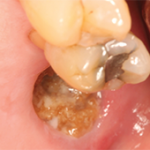The first anabolic treatment agent approved for osteoporosis was teriparatide. The parathyroid hormone recombinant analog mimics the normal physiological actions of parathyroid hormone to stimulate new bone formation.5 Parathyroid hormone-related protein is a structurally similar protein; since the ACR’s 2017 guideline, its analog, abaloparatide, has become available. Both are expensive and require daily injections, which some patients may find burdensome.
The first biologic agent approved to treat osteoporosis, denosumab, inhibits the transmembrane protein and secreted protein receptor activator of nuclear factor kappa-Β ligand (RANKL), which is required for the formation and survival of bone resorptive cells. A newer biologic agent, romosozumab, inhibits sclerostin, a protein released by osteocytes to reduce bone formation. Both are also much more expensive than bisphosphonates.
Selective estrogen receptor modulators (SERMs), such as raloxifene, originally developed to treat breast cancer, can also work as anti-resorptive agents via their action on bone cells.
Lifestyle Interventions
Lifestyle interventions are a key part of treatment for all patients with potential glucocorticoid-induced osteoporosis. Dr.Russell notes that tobacco and alcohol are both toxic to osteoblasts, so it’s important to provide tobacco cessation support and educate patients to use alcohol moderately.

Dr. Russell
Dr. Russell adds that, when appropriate, stopping or replacing medications that can be detrimental to bone can be helpful, such as replacing a proton pump inhibitor with a histamine-2 receptor blocker. “We also like to promote a robust weight-bearing program, whether it’s brisk walking or using the elliptical or light weights,” she adds.
It’s recommended that all patients on chronic glucocorticoid therapy (i.e., for three months or longer) adopt these lifestyle recommendations. Additionally, patients may need supplemental calcium and vitamin D to achieve optimal levels of these vitamins and minerals so critical for bone health.
Treatment
The 2017 guideline, which only considered fracture reduction as an indication of efficacy, recommended an oral bisphosphonate over other treatment options for patients over age 40 at moderate or high fracture risk, due to the drugs established safety, low cost and the lack of evidence that other agents provided better fracture reduction. Intravenous bisphosphonates, teriparatide, denosumab and raloxifene were recommended next, in that specific order.4
In the updated guideline, oral bisphosphonates are strongly recommended over no treatment in adults aged 40 or older at high or very high risk of glucocorticoid-induced osteoporotic fracture, based on strong data for efficacy and safety in this specific population.

